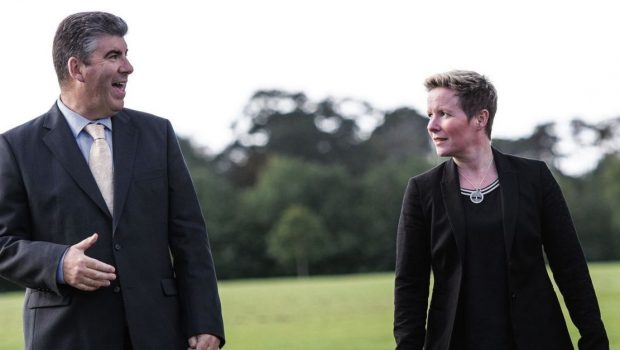The digital heartbeat: technology’s central role in healthcare
Few positives came out of the coronavirus pandemic, but among those that did was a renewed sense that the healthcare sector as a whole was able to face the gravest of challenges.
A large part of this, said Susan Treacy, chief executive of HealthTech Ireland, was through the deployment of technology, something supported by the ability of the health technology sector and HSE to work together.
Systems sprang into action in diagnostics, test and trace, telemedicine and patient administration. This was driven by necessity, but it also demonstrates how technology is capable of transforming the delivery of healthcare.
“If you look at the diagnostic space, previously it would have taken months to get the PCR capability up and running. There was a lot of advocacy by industry for Ireland too: they spoke to suppliers and pushed hard for the solutions,” she said.
“Together with the HSE pathology teams, capability and capacity was really ramped up,” she said.
There are opportunities for economic development too. HealthTech Ireland, now four decades old, represents 140 companies in the health technology area, and Ireland’s medical device sector alone was estimated to have a value of around €750 million in 2020.
Clare Harney, executive director for digital health transformation at HealthTech Ireland, said the pandemic resulted in the spreading of digital technology throughout the sector and country.
“Adoption of digital technologies [in healthcare] would have been piecemeal before and was really ramped up during the pandemic,” she said.
Harney said the pandemic experience would have lasting effects on healthcare delivery in Ireland.
“What we’ve done in rolling out solutions like tele-radiology is raise the baseline for the national data system. We’ve also been able to benefit from learnings abroad [and so] raised the bar for data systems, and we now have an opportunity to build on this,” she said.
Digital health
When most of us think about digital healthcare we tend to think more of lifestyle technologies, from sleep monitoring to step-counting performed by wearable devices, but digital healthcare goes right to the heart of GP and hospital care.
Ray Cahill, vice-president for international, at Change Healthcare and chair of HealthTech Ireland, said the country was seeing considerable innovation.
“Ireland is a hotbed of innovation around healthcare and the HSE is advocating for regularly evaluating technology,” he said.
Nonetheless, Cahill said that more could be done.
“Ireland needs to do more on digital to support our clinicians and patient care. As an industry we’re good at demonstrating what can be done, now we need to make it happen. Ireland has the opportunity to be a shining light in digital healthcare transformation. The HSE recently appointed professor Martin Curley as director of digital transformation to support change in this area and this initiative is definitely a step in the right direction”.
Harney said that the nature of healthcare, and the systems that support it, was complex, and it was not just a case of getting the green light to deploy the latest and greatest.
“It’s important to understand that health] systems are complex adaptive systems that we have evolved over time. You can’t just rip out legacy systems, we need a coherent roadmap,” she said.
Indeed, so-called ‘big bang’ IT projects have fallen out of favour everywhere for precisely this reason – and also because of the potential for failure.
“Industry is here to support, but we know it’s not as simple as ‘rip-and-replace’. We’re not starting from a blank canvas, but through collaboration, we can achieve digital transformation of our health service,” she said.
Nonetheless, the potential is there, said David Toohey, chief executive of Syncrophi Systems, one of the winners of the 2021 Health Technology Innovation Award for Patient safety. The ongoing digital transformation in healthcare in Ireland had, he said, resulted in a vast network of ‘living labs’.
“They are exemplars and prove what can be achieved,” he said.
What was needed now was a bridge for the next step.
For Harney, this means moving from isolated centres of excellence to widespread adoption across the nation.
“One of the key things is going from exemplars centres to national rollout. We need standardisation to define the process,” she said.
One example of where it has already happened is in radiology: through the national radiology system an image taken in one hospital is immediately available to relevant clinicians working in another, and these large, high-resolution files are transmitted both rapidly and securely.
Cahill said that the pandemic had not only revealed the necessity of change or the ability of actors in Irish healthcare to work fast, it also demonstrated that change was necessary.
“The traditional ways won’t work anymore. We need to innovate, so let’s work together,” he said.
Treacy said that HealthTech Ireland – and the sector as a whole – was pleased to see the positive changes and is advocating for this to continue.
“We want to continue the engagement and the momentum that was built up during the pandemic,” she said.








Gloss